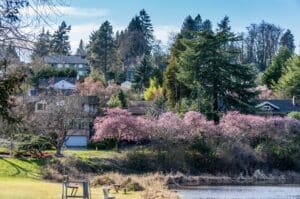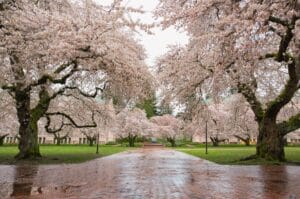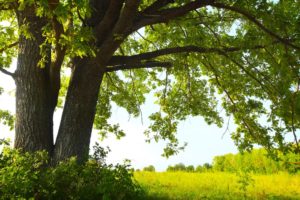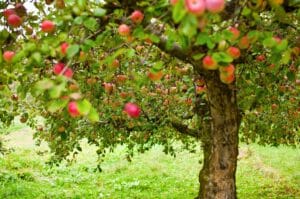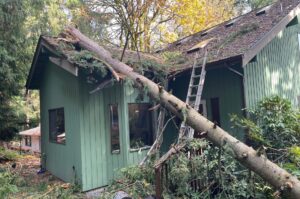Why Do Healthy Trees Need to Be Pruned?
Tree pruning isn’t just limited to sick or damaged trees. Healthy trees should be pruned as well. Here’s why.
If you want big, beautiful, healthy trees that provide shade and beauty for decades, they need to be pruned on a regular basis. And that includes healthy trees, too.
Many homeowners assume that pruning is a practice reserved for unhealthy, structurally unsound trees. However, pruning healthy trees is the only way to prevent your trees from developing structural abnormalities.
By pruning healthy trees now, you can help them stay healthy and minimize the risk of having to make major corrections or even cut down the tree in the future.
Keep reading to see just how beneficial regular pruning can be for your healthy trees, and how it can keep both you and your trees safe in the long run.
Pruning Enhances Tree Health and Vigor
Pruning isn’t just about making your trees look a certain way. It supports the overall health of the tree, inside and out. By selectively pruning weak, overcrowded, or competing branches, you can increase air circulation and light penetration. This encourages new foliage growth, boosting photosynthesis, and allowing the tree to generate the energy it needs to thrive.
With increased foliage, a tree can capture more sunlight and generate more energy and sugars. This allows the tree to continue growing new branches while also expanding the root system, further strengthening the tree. Boosting photosynthesis also allows individual trees to capture more carbon from the atmosphere, helping to clean our air.

Pruning Boosts the Tree’s Aesthetic and Structural Integrity
One of the most important reasons to prune healthy trees is to boost both the overall appearance of a tree, as well as its structural integrity. The most important thing you can do for a young tree is prune new branches to ensure a single, central trunk extends upward.
When a trunk splits into two or three separate stems, it greatly reduces the structural integrity of the tree. It’s far more likely to split, causing at least one section of the tree to fall on anything in its path. When this happens, the rest of the tree also becomes unsafe, and almost always needs to be removed.
Even as your tree matures, branches need to be selectively pruned to ensure a balanced tree that can withstand severe weather systems. By pruning healthy trees early on, you can also ensure they grow straight up into the air, preventing trees that lean too heavily in one direction, which are likely to fall eventually.
Pruning can also help you achieve the appearance you desire. When left to grow naturally, trees can grow in many directions, often looking messy and awkward. For landscaped yards, ornamental trees look best when shaped.
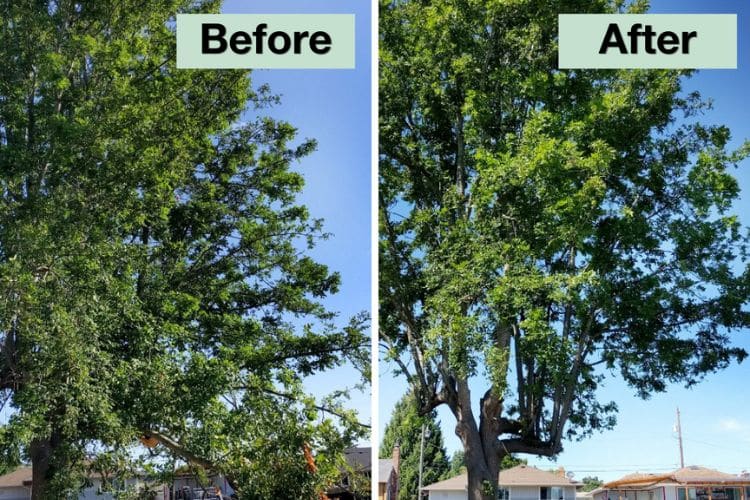
Tree Pruning Improves Fruit Production and Flowering
Flowering and fruit production are at their best when a tree is healthy, free from pests and diseases. By pruning your trees, you can remove any dead or diseased limbs, which can prevent any pest or disease problems from spreading further.
Fungal diseases are common in the Puget Sound area, thanks to constant moisture in the air. With the increased airflow from selective pruning, fungal diseases are less likely to take hold of your fruit trees.
This, coupled with the increased photosynthesis that pruning encourages, provides the tree with the energy needed to grow both fruit and flowers. And with more space between each branch, fruit can grow without obstruction from competing branches, allowing them to reach peak ripeness.
Stay Safe by Pruning Dead or Weak Branches
When trees are professionally pruned, branches that may pose a hazard in the future can be removed long before they become dangerous. This includes both living and dead branches.
Dead or dying branches should be pruned before a storm can knock them out of the tree, which can cause damage to cars, homes, or other personal property. But it doesn’t require a storm to knock dead branches loose. With even a small amount of wind, damaged branches can fall from a tree, posing a safety hazard for your family, unless they’re removed ahead of time.
You can also prune branches that extend too far from the main trunk. The longer the branch, the weaker it may become over time, increasing the chance of it falling.
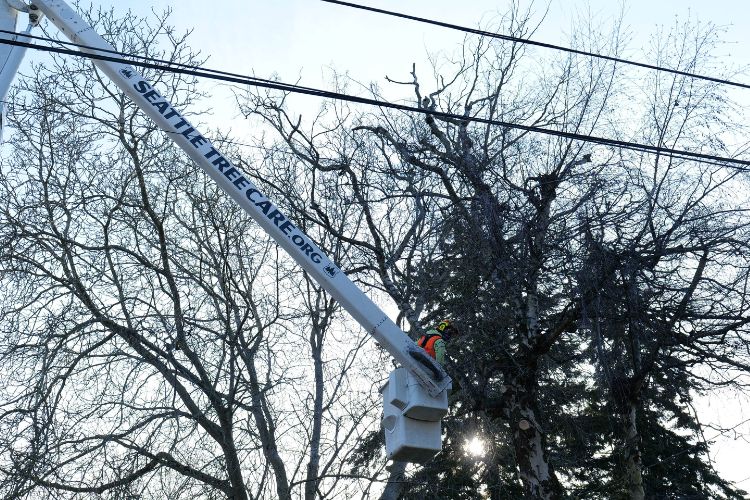
Keep Trees Away from Power Lines
If you notice any branches growing near a power line, they should be pruned right away. No matter how healthy or beautiful your tree is, if it’s growing near a power line, there are some serious safety concerns. Electrocution, fires, or power outages occur often. When power lines are involved, it’s best not to trim the tree yourself.
IMPORTANT – If you have immediate safety concerns, you should contact your utility provider.
When trees grow near power lines, utility companies will often prune the trees themselves. However, they’re far less concerned with the beauty of the tree, and far more concerned with function. If you appreciate the appearance of your trees and the value they add to your property, it’s best to hire tree care experts to preserve your trees as best as possible rather than let the utility company handle it.
Reach out to us at Seattle Tree Care for a professional opinion.
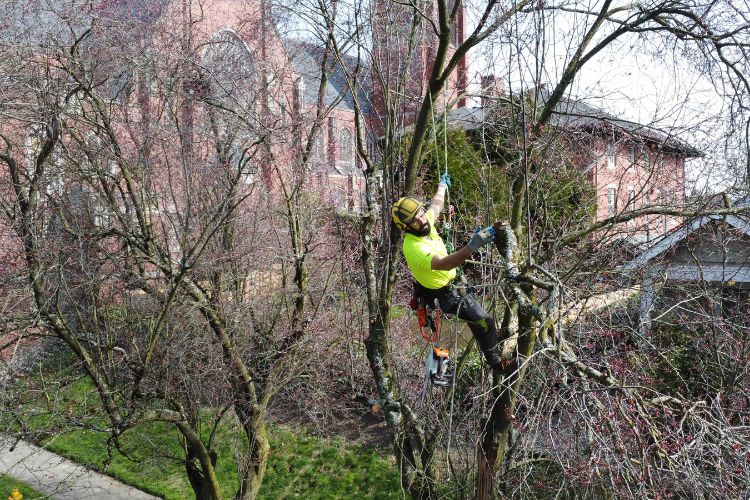
Tree Pruning Helps Prevent Pest Infestations and Diseases
Regular pruning can help prevent disease, decay, and pest infestations. Dead or decaying branches are entry points for many pests and diseases, so removing them as early as possible can limit damage to a tree. Keep these tips in mind when trying to prevent or limit the spread of diseases:
- If a branch is already diseased or infected, pruning prevents it from spreading to other branches.
- When working with branches that are infected, it’s best to clean your tools with alcohol or bleach between cuts,to prevent the spread of disease.
- Selectively pruning your trees also increases airflow, which can limit or prevent the many fungal infections common in the moist Seattle area.
- Keep an eye out for branches that rub together. Over time, one or both branches can become wounded and infected as well. Remove one of the branches to allow the other to thrive.
Limit the Risk of Disease and Pest Problems by Pruning in the Winter
Winter is often the best season for major tree pruning. For deciduous trees, it’s much easier to evaluate the branches of a tree since you can see clearly without all the leaves. Plus, many of the disease-carrying pests that harm trees are inactive during the winter.
By pruning when it’s cold, the risk of spreading pests and diseases is much lower than at other times of the year. And when branches are cut and trees receive new wounds, pests are less likely to make their way into these wounds, giving your trees time to heal.
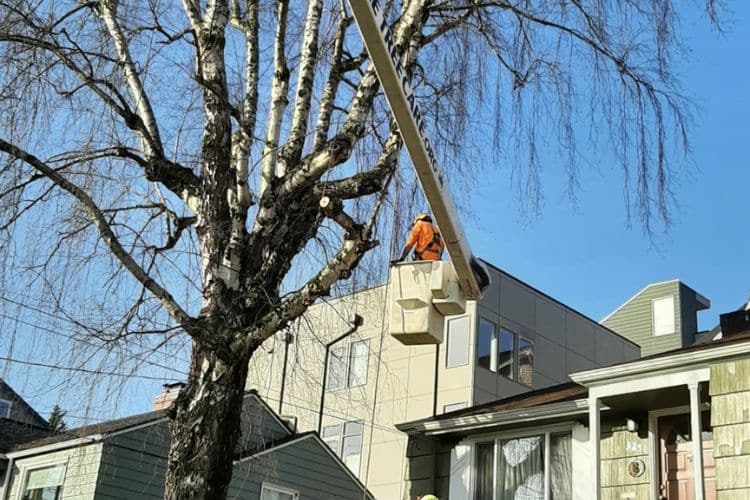
Save Money by Pruning Your Trees
Regular tree pruning can save you money in the long run, whether you do it yourself or hire a local, certified arborist. Yes, it costs money to have professional tree care experts prune your trees. But by pruning your trees, you boost the structural integrity and the health of the tree.
This can lower the risk of trees decaying, developing problematic branches, or getting damaged in a storm. By preventing these problems with professional pruning, you can lower the risk of having to remove the tree altogether if it fails, which can be more costly than regular pruning.
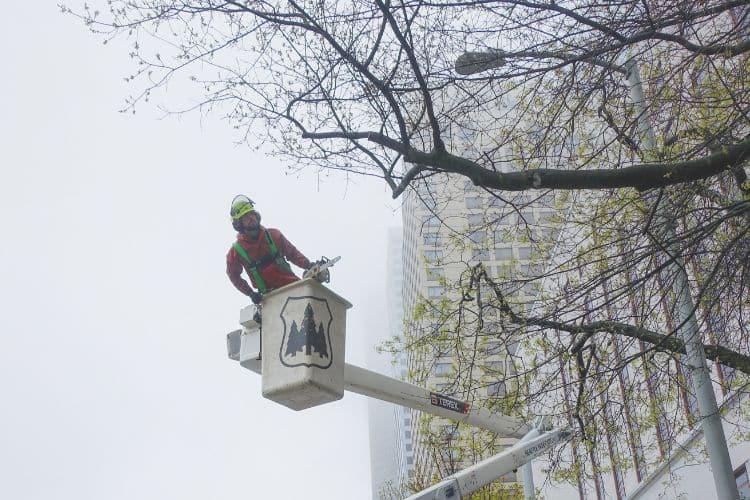
Let Seattle Tree Care Prune Your Healthy Trees
To maximize the lifespan, health, and beauty of trees in residential and commercial areas, they need to be pruned on a regular basis. Pruning helps trees develop the structure and strength they need to weather the elements. And pruning also helps prevent pest infestations and diseases, allowing your trees to look their best for many years.
If you want to protect your Seattle-area trees and encourage healthy growth for years or decades to come, then let Seattle Tree Care craft a tree care plan for you.
Call us at 206-789-0534 to request a visit or use this short form to schedule a consultation and find out how we can help your trees thrive.
Recent Articles
Looking for More?
We've got you covered with tips, resources, updates, how-to's, and other helpful information about trees and landscapes in Seattle, Puget Sound, and King County, WA. Join the thousands of smart local residents who get the monthly newsletter from Seattle Tree Care for helpful information you won't want to miss!
There's no spam - we promise! We are committed to keeping your e-mail address confidential. We do not sell, rent, or lease our contact data or lists to third parties.



